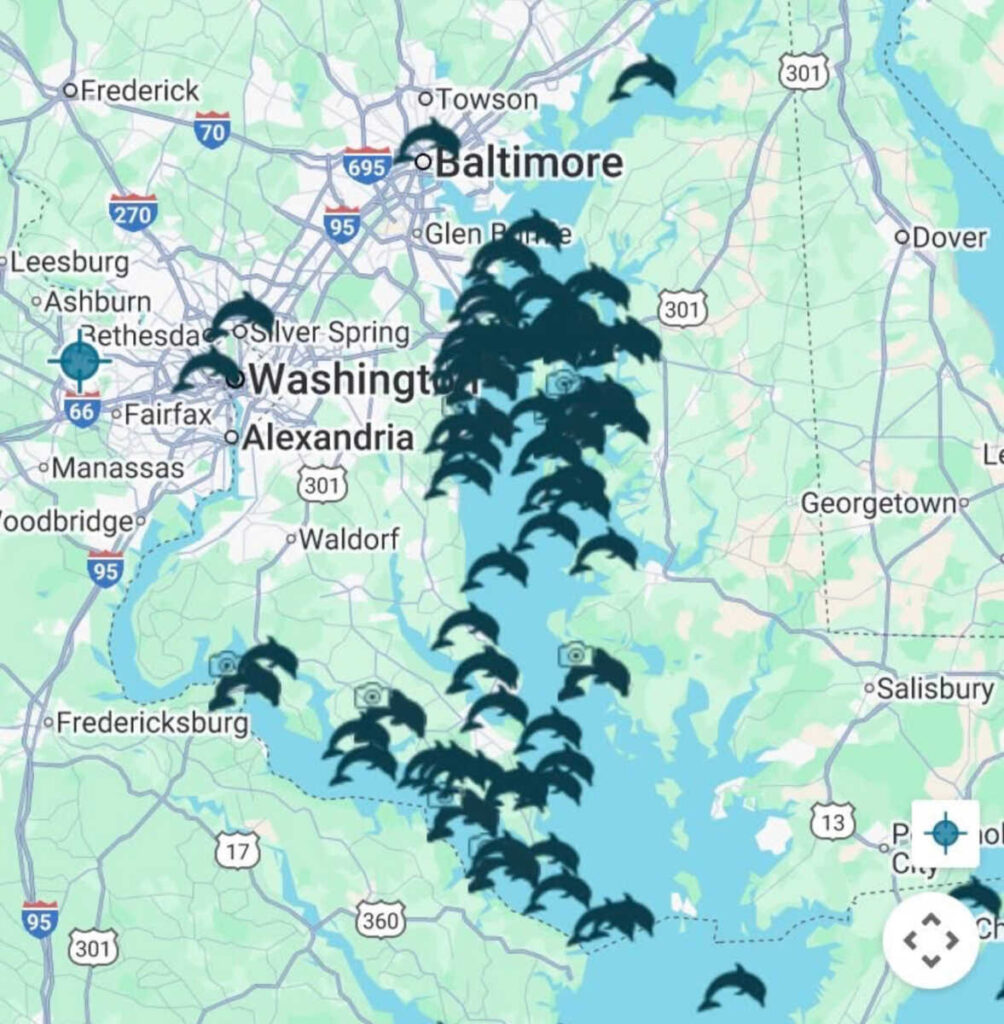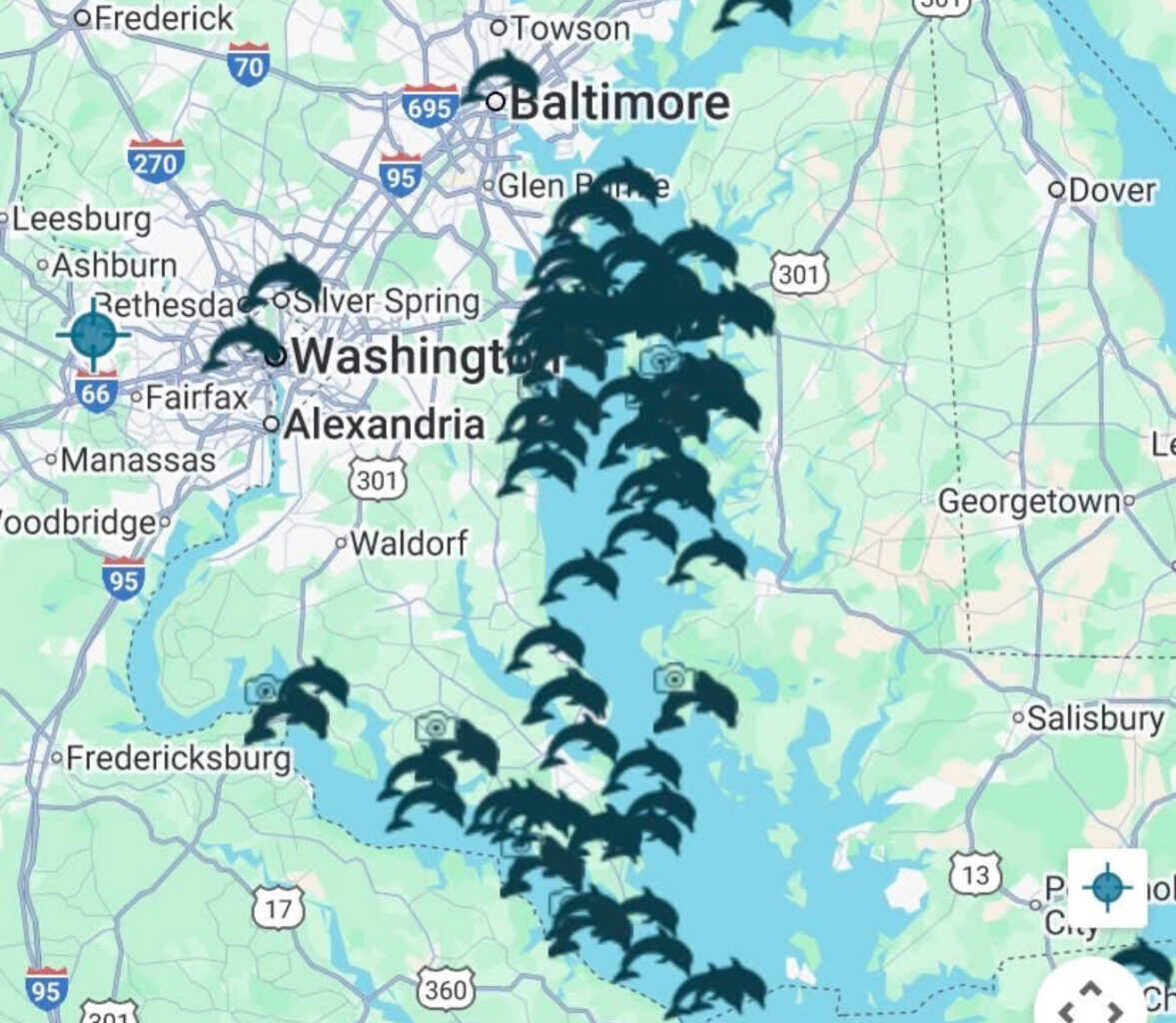Published July 1, 2025 at 7:37AM

Courtesy Chesapeake Dolphin Watch
Dr. Helen Bailey and her team at the Chesapeake Biological Laboratory, University of Maryland Center for Environmental Science, are studying how often dolphins come into the Chesapeake Bay, how long they spend here, what areas of the Bay they are using and why. The Facebook page for Chesapeake Dolphin Watch shares photos of dolphins spotted across the area.
Last week, an unusually high number of sightings were reported across Maryland, with notable activity in the Chesapeake Bay, Choptank River, Wye River, South River, St. Mary’s River, Patuxent River, Potomac River, Miles River, and Piankatank River. Per the image shared by Chesapeake Dolphin Watch, some of the sightings appear to be further north in the Potomac River than usual.
“Have YOU seen dolphins in your area? We want to hear all about it! Share where you’ve spotted them in the comments below. Don’t forget to report your sightings in our Chesapeake DolphinWatch app or website. Let’s keep the dolphin excitement flowing!”
Per Chesapeake Dolphin Watch: “Dolphins are beautiful, charismatic animals and one of the largest inhabitants of the Chesapeake Bay. But we know very little about them. When, where and why do they visit the Bay? We need your help to find out! The bottlenose dolphin (Tursiops truncatus) is common along the U.S. Atlantic coast. They are generally spotted in the Chesapeake Bay during the summer with reports of dolphins seen leaping in the air or bow-riding boats. They have a gray body and are named “bottlenose” after their short, stubby beaks. Adult bottlenose dolphins can range in size from 300-1200 pounds and reach 9 to 12 feet in length. They feed on a variety of prey, including fish and squid.”
